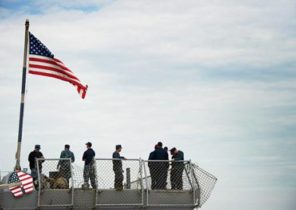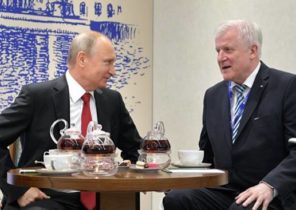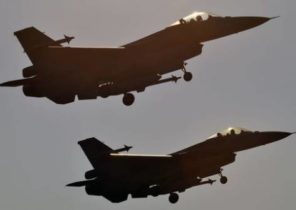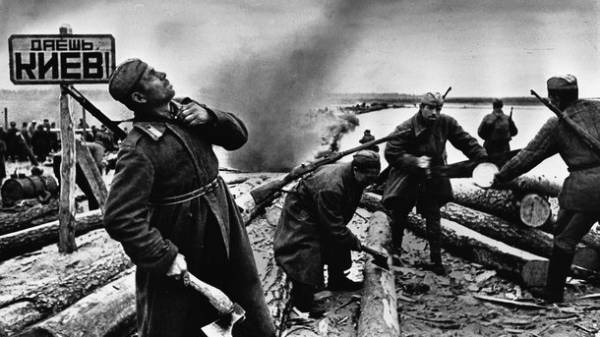
Ukraine celebrates 72nd anniversary of victory over Nazism in the Second world war, the most terrible and bloody conflict in the history of mankind. According to various estimates of historians, during the years of the grinder in it have taken part about 80% of the population, and the death toll in the tens of millions. So, only soldiers on both sides killed 25 million people. The number of dead among the civilian population even worse — 38 million
Unfortunately, not spared this bloody harvest and the Ukraine. However, the soldiers who fought for our country, managed to break the course of the fighting and show the Third Reich teeth. Thus, in particular, during the war there were four Ukrainian front. It was the provisional name for the strategic associations of the troops, established on 20 October 1943 and carried out a variety of combat operations. “Today,” I remembered the highlights and significant battle Ukrainian fronts in the war.
BATTLE FOR KIEV: THOUSANDS OF CASUALTIES
One of the first battles of the pooling of forces, which was called the First Ukrainian front, was the battle for Kiev in November 1943. The impetus for this battle was the capture in September of the enemy bridgehead to the North and South of the Ukrainian capital, as well as a few first unsuccessful attempts to capture the city itself.
She Kiev offensive operation began on 3 November after a 40-minute artillery preparation, the troops of the First Ukrainian front moved two kilometers to the city. By the end of the first day of the 38th army and the 5th guards tank corps has progressed a
12 km and 240 th infantry division was already in Pushcha-Vodice. The next day, tank and infantry units were able to come close to the Northern border of the city, and
5 Nov 1st guards cavalry corps cut the enemy access to one of the highway on the Western outskirts of Kiev. It did not further allowed the Germans to transfer reinforcements from the neighboring bridgehead and forced to retreat in the direction of Vasilkov. On the night of 6 November, the advanced units of the Soviet army, suppressing resistance from the German troops entered the nearly empty burning Kiev — the retreating enemy set fire to stand in the battle house. The next day the units of the Ukrainian front managed to free fast, and on 13 November, after the liberation of Zhitomir, Kiev offensive was over.
In General, our capital was freed 671 thousand people, including the allied forces of Czechoslovakia. While analyzing the losing sides in this battle, historians disagree and even say that to accurately assess the number of casualties impossible. However, it is assumed that the total losses during the battle for the Dnieper (the liberation of Kiev was one of them) on the part of the red army amounted to 300-400 thousand. Germany, which was supported by the Romanian troops have lost almost as much.
KORSUN: BOILER FOR SOLDIERS VERMAHTA
The troops of the First Ukrainian front and participated in the largest in Ukraine offensive, the Korsun — Shevchenko battle. During these events at Korsun (Cherkassy region) was encircled from 60 to 80 thousand soldiers of the German Wehrmacht. During the battle (from 24 January to 17 February 1944), the majority have been either killed or captured, and the Germans this battle was called the “Ukrainian Stalingrad”. In General, from the occupants in the event was attended by 170 thousand people, and on the Soviet side — 255 thousand fierce episode of the Korsun-Shevchenko offensive operation was the battle for Boikove field, piece of land between the villages of komarivka Shenderivka and khyl’ky. It has accumulated more than 30 thousand Germans who tried to escape from a cordon on the night of 17 February. Even those who wanted to surrender and come out with their hands, the horsemen of the don cavalry corps was not spared. So at Korsun dead soldiers of the Wehrmacht counted much more than the wounded.
Great were the losses and connections Ukrainian front. According to historians, the number of dead amounted to more than 24 thousand people, wounded 56 thousand Among them were residents of the village of Kvitka, located 15 km to the South from Korsun. Lived there all men capable of bearing arms, fell into the millstone of Stalin’s orders on forced mobilization. Mobilized was 500 people, and the vast majority of them died.
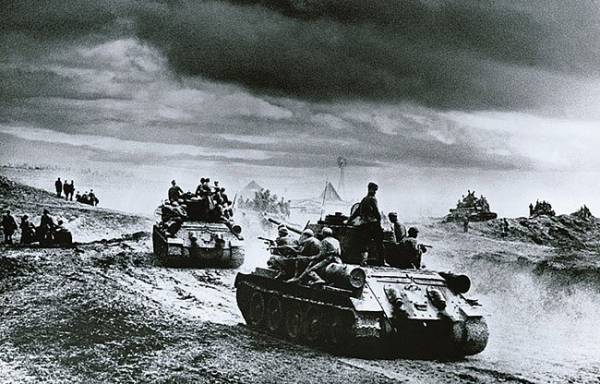
Battle. Was the largest offensive operation Ukraine
SECOND FRONT: THE VICTORY WITHIN THE BATTLE FOR THE DNIEPER
Troops of the Second Ukrainian front have spent almost 30 combat operations. The battles were fought on the territory of our country and in Hungary (the Budapest strategic operation). Actively participated fighters of the front and in the battle of the Dnieper. One of its stages was the Kirovograd offensive.
Fighting within the battle for Kirovohrad (current Kropiwnicki) began on the morning of 5 January 1944: after hours Soviet artillery in the course went infantry. The soldiers marched through the special passages in the minefields, which for them was prepared by the sappers. A breakthrough in some places was so unstoppable that the Soviet troops for only a day moved up to 24 km! Despite the fact that the enemy was attended by more than 420 thousand people and 520 tanks, and Soviet troops were 550 thousand people, but only 265 tanks. Just two days later troops of the Wehrmacht cut off escape routes from Kirovograd, and on 8 January the town was completely cleared of enemy troops.
After liberation of the Second Ukrainian front continued the offensive, moving at 15-20 km. However, in mid-January, knowing fatigue fighters front commander Marshal Ivan Konev stopped the operation, and on 16 January the troops went on the defensive.
“The Kirovograd operation was supposed to complete a number of violent fights and battles in our front, on the right Bank of the Dnieper on the expansion of the bridgeheads and created the conditions for a transition to a decisive offensive in right-Bank Ukraine, wrote in his book “notes of the front commander” Marshal. — Freeing Kirovograd and securing the areas of the North-West, West and South of Kirovograd, Soviet troops secured the favorable conditions for subsequent offensive and, in particular, for the Korsun-Shevchenko operation. At the same time active action front in this area forced the German command to bring considerable forces from other areas, which facilitated solution of tasks of the troops of the 1 St and 3 rd Ukrainian fronts.”
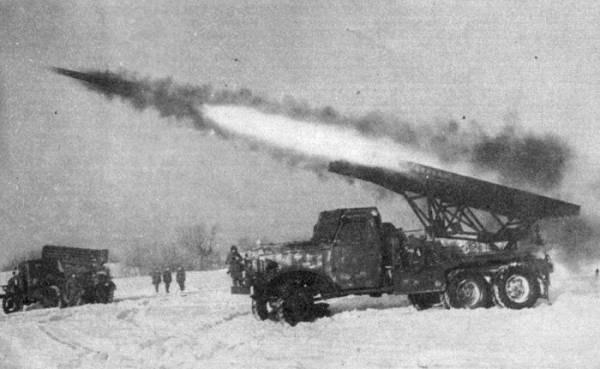
The battle for Kirovograd. The town was liberated on the third day of the operation
THE BATTLE FOR THE NIKOPOL: BROKE 12 DIVISIONS
This part of the Dnieper-Carpathian strategic offensive operation is notable for the fact that as a result of Nikopolska-Krivoy Rog offensive, which lasted from 30 January to 29 February 1944, troops of the 3rd and 4th Ukrainian fronts were defeated 12 German divisions killed more than 40 thousand opponents. The prisoner was captured by 4600 people. Almost all heavy weapons and vehicles were abandoned during the retreat or destroyed. It is worth noting that the first attempts of breaking the enemy’s defense of the Ukrainian fronts failed — not enough units. The supply of the army prevented and spooky slush on the roads. But January 30, troops of the 3rd Ukrainian front feint forced the German command to believe that the purpose of the attack is Kryvyi Rih, and reduce the security of the Nikopol area. This allowed our fighters six days of the offensive to break through the defense and advance of 60 km. the German high command on 11 February made an attempt to turn the tide of battle, striking the junction of the coming 46th and 8th guards armies. But two armored and four infantry divisions counterattacked in the direction apostolove and to the end of the day, moved 8-10 km.
This defeat finally deprived the Wehrmacht of hope to restore the connection with the blocked in Crimea, the 17th army and created the preconditions for the liberation of the Peninsula. The operation had a commercial value under the control of the Soviet army was returned to the manganese mines, whose ore was critical for the German steel industry.
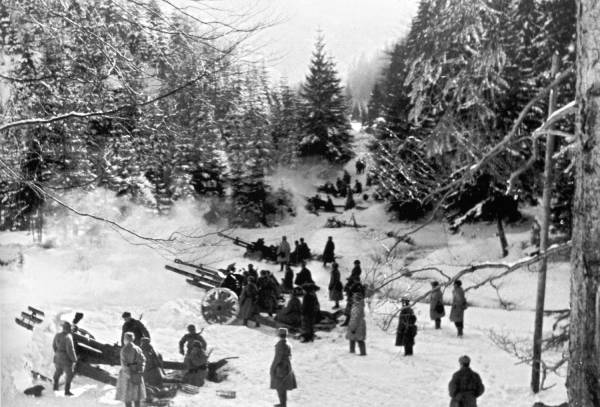
Battle. Killed 40 thousand soldiers
SOUTH PALMYRA AND MARINES
After the Third Ukrainian front liberated the town of Nikolayev, its main forces rushed to Odessa — the liberation of the South Palmyra and the whole Odessa region became a logical continuation of the entire Carpathian-Dnieper operation. The main objective of the Odessa operation (it lasted from 26 March to 14 April 1944) — to defeat seaside group of Germans between the rivers southern bug and Dniester, and also to go to the border between the USSR and Romania, which at that time was an ally of the Third Reich. A breakthrough of enemy defenses began at once in three places: in the North, centre and South, where the important role played by naval commandos. By the way, that this arm was a characteristic tactical tool that was used in the USSR.
For example, the Americans and the British, on the assertions of the historians, used only Marines in large battles (landing in North Africa, Sicily, Normandy). In the end, the night from 9 to 10 April, Soviet troops occupied initial positions for the assault on Odessa. The assault on the city was immediate — by 11 am on 10 April, troops of the Third Ukrainian front was already on Deribasovskaya street. Thus, the result of the Odessa operation was destroyed by the German army group “A” and the remaining troops, called army group South Ukraine, was driven back beyond the Dniester. If to speak about the losses, the Third Reich under the Odessa lost almost 29 thousand people and 10 thousand were wounded. Information on losses of the Soviet troops is classified.

The enemy’s defenses. Torn in three directions
MELITOPOL: NO TRAINING
After completion of the Donbass operation the troops of the southern front was renamed into the Fourth Ukrainian front, left the defensive lines of the Germans near Melitopol. Near the town were several lines of fortifications with very strong defense system: fire structures, trenches, and numerous antitank and antipersonnel obstacles. In the end, 26 September 1943 Melitopol operation.
Initially, the city that was host defence, it was planned to inflict two blows from the North and the South. However, the soldiers of the Fourth front was tired, they were out of supplies. Moreover, the order to consolidate was given a command without an operational pause after the previous operation and without proper training. There was no time even for exploration! As a result, for five days the Soviet troops with huge loss managed to move only 2-10 km, and from 30 September to 9 October offensive at all was suspended.
After that, the front commander, Marshal Fedor Tolbukhin, after a thorough analysis of the situation and regroup, made in one night, 35-mile March and by the morning, 11 October, concentrated in the area East of Melitopol. Just two days later, Soviet troops occupied the southern part of the city. It should be noted that on 12 and 13 October at the front was the heavy snowstorm and low visibility. Despite this, the Eighth air army of the Soviet Union during those days made more than three thousand sorties! In the end, October 23, Melitopol was liberated, and the troops advancing from the North, broke through the defense and cut the rail line Zaporozhye — Melitopol. On this the Soviet troops are not stopped, and the operation continued until the fifth of November, until the entire Northern Tavria has not been released. However, the loss of the Soviet side was not commensurate with the losses of the enemy: if the Wehrmacht lost a total of 4 thousand people, from the Union was
42 thousand killed. Another 155 thousand people were injured.
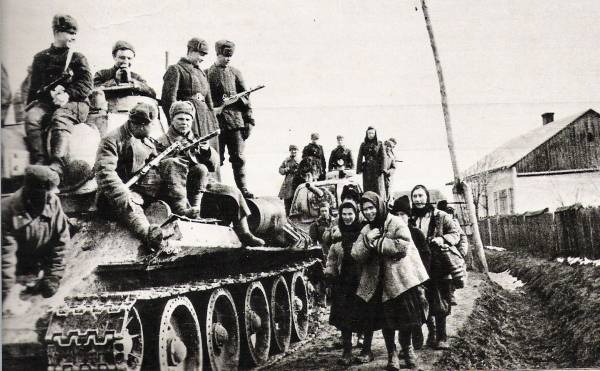
Operation in the South. In the battle for the town on the Soviet side killed 42 thousand and 155 thousand were injured
THE CRIMEAN OPERATION: BREAKTHROUGH TO ROMANIA
One of the most important military operations of the Second world war is Crimean offensive of 1944. The campaign lasted little more than a month — from 8 April to 12 may, and participated in it the troops of the 4th Ukrainian front and the independent coastal army. Fire support from sea and air was provided by the black sea fleet and Azov military flotilla. Only the liberation of the Crimean Peninsula was attended by 470 thousand people, 5982 guns and mortars, 559 tanks and self-propelled guns, 1250 aircraft.
The attack on Crimea was made possible after the result of the battle of the Dnieper
Soviet troops managed to capture the most important strategic bridgehead at the Gulf Sivash. Parallel to this was captured a bridgehead at the Eastern end of the Peninsula — Kerch. This was the beginning of a land blockade of 17-th army of the Wehrmacht, which was clamped in a vise with two sides. Noteworthy is the fact that the higher ranks of the Reich has repeatedly advised Hitler to abandon the retention of the Crimea and return it to the Soviet army. However, he was adamant that the loss of the Crimea will encourage Romania and Bulgaria to the release of the Nazi coalition, and ordered to hold the Peninsula at any cost. Even the fact that the group of Soviet forces many times superior forces of the 17th army of Wehrmacht and the front line on the mainland has gone far to the West, didn’t stop him. The troops of the Ukrainian front began to break the defence on 8 April with the attack in the district of Perekop and Sivash.
Simultaneously, from the Kerch hit the separate Maritime army. Already on April 11, Kerch and Dzhankoy was released, that is, hurriedly, and on 13 April the Germans knocked out from Simferopol and Evpatoria. The tough nut turned out to be Sevastopol — the main naval port that has provided the message with Romania. From 26 April to 9 may 1944 for the assault on the city. And already on may 12, the remnants of the German units surrendered at Cape Chersonese. According to historians, the Crimean operation is made on the command of the Reich strong impression. In particular, the German historian Andreas Hillgruber in his book “defense of the Crimea”, wrote that the decisive offensive of the Soviet army and Navy not only allowed to quickly release the Peninsula, but also to thwart the plans of command on the evacuation of the remnants of the 17th army from the Peninsula. By the way, for heavy losses during the evacuation of the command of the Crimean group of German troops had been accused of unprofessional. The release of the troops of the 4th Ukrainian front in the Crimea, and subsequently, Nikolaev and Odessa, has fundamentally changed the balance of forces in the Black sea. Dominance in the waters of the Soviet fleet allowed to focus on the liberation of Romania.

Crimea. Sevastopol took 12 may
